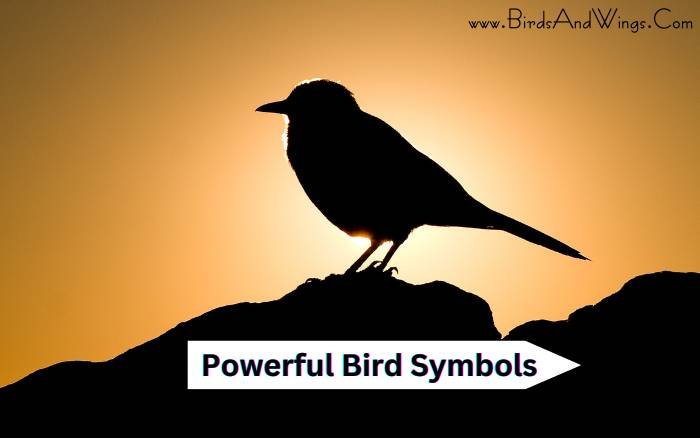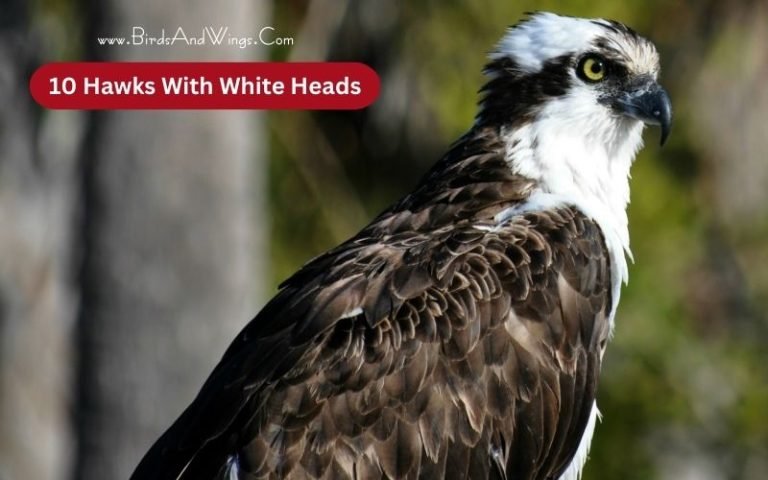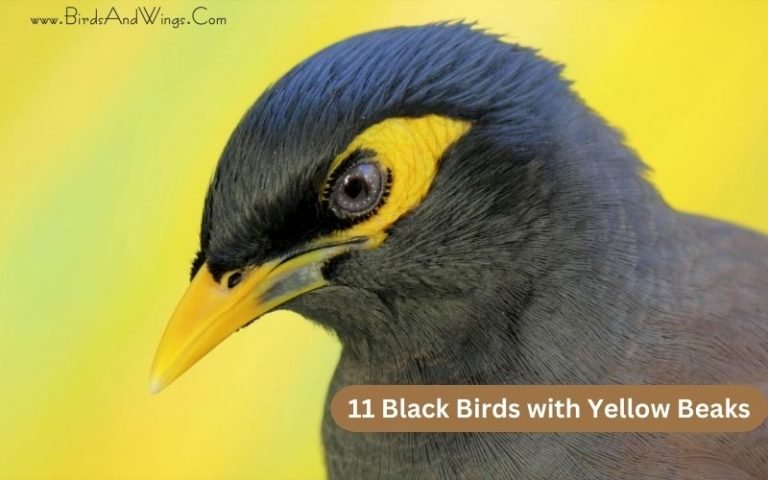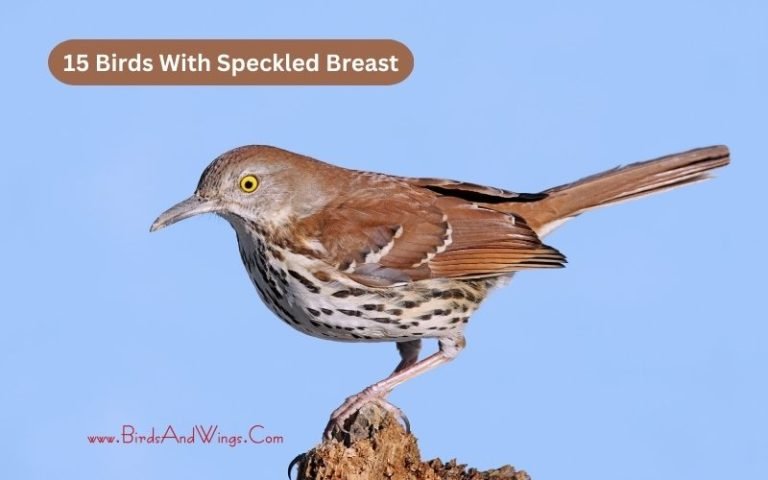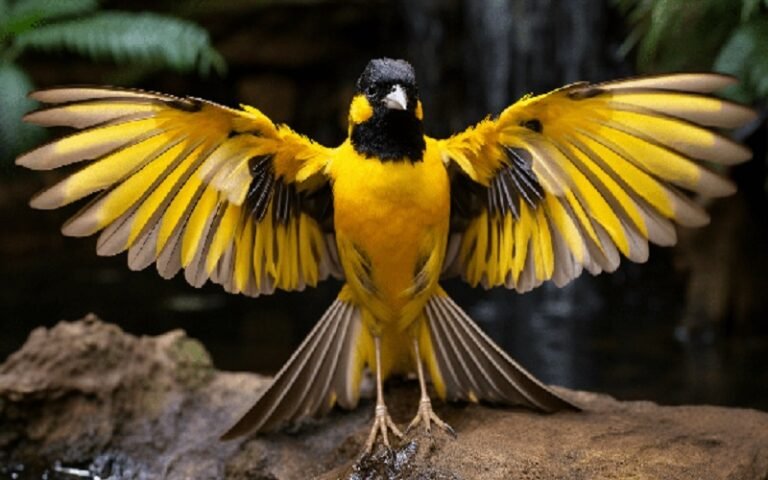15 Powerful Bird Symbols Explained
A bird does not sing because it has an answer. A bird sings because it has a song.
Maya Angelou
When the dawn of a new day approaches, the grave silence of the night is broken by soft tunes. The cheerful chirping and the appearance of colorful birds soaring through the sky are threats to witness as the first rays of sunlight hit the lands.
When one opens their eyes and looks at the morning sky, they can spot different kinds of birds gracing the world with their songs and optimism.
The beautiful sight puts a smile on those who witness the magic of these birds. Their tunes are sweet to listen to, their presence a calming balm for the soul.
Little do people know that birds are not simply beautiful creatures that brighten the skies but represent freedom, divinity, and purity.
Their symbolism varies across cultures but holds significance in everyone’s lives, whether one knows it or not. From the earliest of times till this day, birds have been used as symbols for essential events. Some countries even have birds on their flags.
What is it about the birds which fascinate the human mind? Do their symbolisms hold any place in our daily lives anymore? Or are we subconsciously integrating their symbolism into our lives without knowing?
Let’s embark on a short journey to understand the importance of the birds’ symbolism.
Birds across the Cultures
Since the time of the earliest known civilization of Mesopotamia, birds have been treated almost like royalty. Sumeria was part of the Mesopotamian region, which existed around 3,100 BC; in their culture, birds were used to predict the future.
The Mesopotamians studied the flight and behaviors of birds to determine their predictions. This form of divination was famous and revered, making the people believe their lives would be fulfilling if they followed the birds’ habits. Old Babylonian tablets also record at least twenty-five omens and predictions made with birds (Zorzi).
On the other hand, Native Americans believed that when an Eagle flies high in the sky, it carries the prayers of the living and delivers them to the souls of deceased loved ones. Even in their art, designs inspired by the feathers of various birds are present.
Birds represented the link between heaven and earthly life. Bird imagery is uncommon in Native American life (Pecastaing).
What about Asian culture? Do birds symbolize anything in this part of the world?
The ancient art of Feng Shui holds birds in high esteem. Feng Shui also places birds as the link between the living and the deceased, but the birds are also seen as messengers who deliver the wishes of humans to the gods residing in the sky (Cho). Some birds in Chinese culture were seen as pure, divine, and virtuous, but many were considered ominous.
Hence, we can see that birds hold powerful symbolism
Birds in Literature
The symbolism of birds is not only in cultures but also influenced by literary works. While reading books is few people’s forte, those who study Literature can also find the symbolism of birds in various texts and stories.
One of the most famous books, To Kill a Mockingbird, infamously quotes, “Mockingbirds don’t do one thing but make music for us to enjoy. They don’t eat up people’s gardens, don’t nest in corncribs, they don’t do one thing but sing their hearts out for us. That’s why it’s”killing a mockingbird is a sin (Lee).
In this book, Mockingbirds symbolize innocence and the prevalent racism plaguing society. When a Mockingbird is killed, it represents the loss of innocence. This is crucial when the innocent man, Tom Robinson, is sentenced to death for a crime he did not commit.
Moreover, his status as an African-American also exposed the underlying racism hiding under the facade of a cultured society. The blatant racism led the innocent man to the executioner’s block, which signifies how society killed a Mockingbird.
In Samuel Coleridge’s famous poem, “The Rime of the Ancient Mariner,” an Albatross is the harbinger of good luck, but terrible events follow when the Ancient Mariner kills one. As a result, he has to wear the Albatross ‘around his neck,’ highlighting the guilt he has to carry for the rest of his life for causing the ominous events in the poem (Harms).
In Ancient Chinese Literature, birds were associated with selected qualities, and many scholars integrated them into their works. During the Eastern Han dynasty, Mi Heng was a scholar renowned for his rebellious nature and frustrations against the established order.
He composed a poem, “Rhapsodies on a Parrot,” where the main character, a parrot, was captured and caged by nobles. As a result, the parrot lost its family, its home, and the will to live. Slowly, he descends into depression and dies, leaving only grief behind.
His poem was a critique of the nobles slowly caging the scholars who cannot freely express their creativity and knowledge but must buckle under the weight of order and establishments enforced by men (Sun).
Therefore, we can see that birds are essential symbols in various cultures and hold varying but crucial symbolisms in all kinds of Literature.
So, let’s look at some of the most prolific birds that still hold direct or indirect importance in the modern era.
15 Powerful Symbolic Birds
1. Phoenix Symbolism
It may not be a real bird, but the fascination with Phoenixes transcends realism. These mythical birds are present in many cultures and represent various qualities.
In Chinese culture, the Phoenix or feng huang is usually paired with the Dragon. The Dragon represents the Emperor, and the Phoenix is the Empress of China. Together, they rule over the country with solid values. According to The Spruce Magazine, it also represents good luck and rebirth in Chinese culture.
2. The Crow
Many people associate the Crow with darkness or as a bad omen, but it means to gain a perspective by tapping into oneself. Crows represent the change and transformation needed in a person’s life. They do not warn of bad luck but rather encourage a person to find their perspectives in any situation in life (Field).
3. Anzu
Another mythical but lesser-known bird is the Anzu. In ancient Mesopotamia, the Sumerians believed that Anzu was the guardian of all treasures. Son of the goddess of oceans, Tiamat, Anzu, was described to have wings that could even eclipse the sun. He guarded the homes of the Gods and was their messenger.
He also symbolizes strength and power; his depictions are found in many Mesopotamian artifacts (Paranormal Encyclopedia).
4. Magpie
Unlike many birds, which hold similar meanings across various cultures, Magpies are regarded in contrasting views between the Western and Eastern cultures (Kingsyard).
In the West, Magpies are associated with people who talk too much. This is generally considered a sign of bad luck because talking too much is seen as a bad habit, and people do not perceive them positively. On the other hand, Chinese culture associates the bird with happiness and luck. The most famous tale of China, “The Cowherd and Weaver Girl,” depict that every year, the Magpies gather to form a bridge so that the estranged lovers, the Cowherd and his wife, the Weaver Girl, can meet.
5. Owls Symbol
In Eastern culture, owls are regarded to have the voice of evil. When an owl hoots, bad luck will follow. Hence, the people in the East do not view the birds positively.
However, in the West, owls are seen to have wisdom, especially among the Greeks. The Greek Goddess, Athena, favored owls; hence, many people highly regarded the bird. Owls have also been popularized in the Harry Potter series, associating them with enchantments.
6. Doves
Doves are considered to be the symbol of peace almost in every culture. In Ancient China, doves were also used as messengers between loved ones, signifying undying love. The Dove also signifies equality among races, gender, and regions.
7. Bats
The Western world associates bats with horror and dread. Bats have been popularized as fearsome creatures, namely in Vampire literature, a stigma that stains the image of the usually calm creatures.
On the other hand, Chinese culture calls them baneful, where the term’ fu’ means blessings. Chinese artists would include bats in their art to symbolize blessings.
8. Peacocks
Peacocks are the representative figure in the Indian subcontinent for royalty and power. When Mughal Emperor Shah Jahan came to the throne, he commissioned the Peacock Throne for his reign (Britannica). It symbolized his absolute power and the royal blood he carried. The throne was stolen and lost, but the throne holds significant value in Indian culture today.
In Greek Mythology, the peacock is a sacred bird associated with Hera, the goddess of marriage and fertility (Phoenix Art Museum).
9. Hummingbirds Symbol & Meaning
Small, resourceful, and strong. These are the traits most commonly attributed to the Hummingbirds. In Native American culture, Hummingbirds are seen as the symbol of good luck. However, they are also known for being fierce fighters and territorial, which links them with a good hunting trip and travel (Cedar Hill).
10. Roosters
Their morning calls may annoy the late sleepers, but this bird’s enthusiasm has no end! They welcome every day with energy and hope, symbolizing their optimistic nature.
In Chinese culture, the Rooster is one of the symbols in their zodiac. People born under the sign of Rooster are seen as ambitious, honest, talkative, and gullible. In African cultures, the Rooster is a hero who fights off the darkness of night and brings in a new day (Clifford).
So, the next time a rooster calls, it is a sign to seize the day and make the best of it!
11. Parrots
These vibrant birds are famous across many cultures but rarely discussed. Like in the poem of Mi Heng mentioned above, caged parrots represented their lack of creative freedom. These birds were unique to them because they could talk, and Chinese Emperor Huizong even called them birds from heaven.
In Native American culture, parrots are seen as a totem of creativity, freedom, and spiritual growth. The colorful feathers inspired the indigenous people and integrated them into art and Literature (Hawkins).
12. Swallows
Let’s take a perspective from a lesser-known culture to understand a Swallow’s significance. In Portuguese culture, these sprightly birds are held in very high regard. Swallows signify love, hope, and loyalty.
The Portuguese believe that swallows mate for life and represent undying love among couples. It is not uncommon to find the symbolism of Swallows in Portuguese weddings. They also believe that Swallows bring good luck and happiness. It is a vital part of Portugal today and is regarded as a wondrous creature of nature (We Are Portugal).
13. Eagles Symbol
Brave and fiercely protective, Eagles are regarded in high esteem by many cultures, so much so that their flags have Eagles on them. One such country is Albania which has a double-headed Eagle. It represents the country’s connection with Ancient Rome, but it also highlights the resilience of the people (Roos).
Being a wartorn country, the people of Albania regard themselves as fierce, strong, and brave. It also symbolizes the country’s victory over the fearsome Ottoman Empire. Upon their win, Albanians took up the Ottoman’s symbol, an Eagle, on their flag (Unacademy).
There are many unknown facts about eagles that you may not know. You can read this post to learn some interesting eagle facts.
14. Cranes
In Feng Shui, Cranes are associated with long lives. Ancient Chinese people believed that cranes could live for thousands of years and could bless everyone with a long life. Origami Cranes models are also a staple in many Chinese homes. These represent the ability to grant wishes. When a household has crane origami in its decor, their wishes will be granted according to the Ancient Chinese philosophies.
15. Sparrows
Last but not least are the little bundles of joy, Sparrow symbolism! From the temples of Athena to the scriptures of Hinduism, sparrows are embedded in a variety of cultures.
In Hinduism, the texts of Ramayana highlighted the importance of sparrows. When Sita asked Ram to save a sparrow from being hunted by a hawk, he shot down the hawk with an arrow. This represented his love and devotion for her, thus associating Sparrows in Hinduism with the same (Sparrow Daughter).
Interpretations and Personal Connections With Birds Symbols
While many of the cultural symbolisms of birds are not followed in the fast-paced world of modern times, it is still a fascinating subject to indulge in. Their free spirits and flying ability give people freedom and independence.
Birds do not restrain themselves but fly across the skies to defy all boundaries. This mirrors human nature to be free, expressive, and creative.
They objectively see the world from high above the clouds, seeing things far from even human imagination. When we open our minds to various possibilities, we gain the ‘bird’s eye view,’ meaning we can see things clearly and in a new light.
Even if people nowadays ignore the cultural significance of birds, the spiritual significance remains. Waking up to birds chirping after a long night’s sleep can refresh one’s mind and soothe their soul.
A bird’s hymn reminds people of the little things in life, making them appreciate the small moments without realizing it. As a bird takes flight, people want to fly like them, explore the unknown and be carefree.
One does not need to be a bird lover to appreciate their symbolism. Anyone seeking a connection with their spiritual self will be able to relate to the calmness and freedom a bird embodies.
Conclusion
For thousands of years, birds held deep meanings and symbolisms in ancient cultures, which can also be applied in modern times. Civilizations may have changed, but humans’ innate need for peace and happiness is still there, symbolized by the beautiful birds around us.
These wonders of nature inadvertently touch everyone’s hearts, making them long for a better and liberating life. Every bird represents a different facet of human personality, and associating oneself with it can make one feel at peace.
So let’s tap into the deep-rooted meanings the birds hold and learn. Every bit of knowledge and research into these marvelous creatures will make people wiser and open their eyes to many possibilities. Like every bird, humans can also take flight to enter their spiritual world. Once those doors are open, people will feel as free as a bird.

